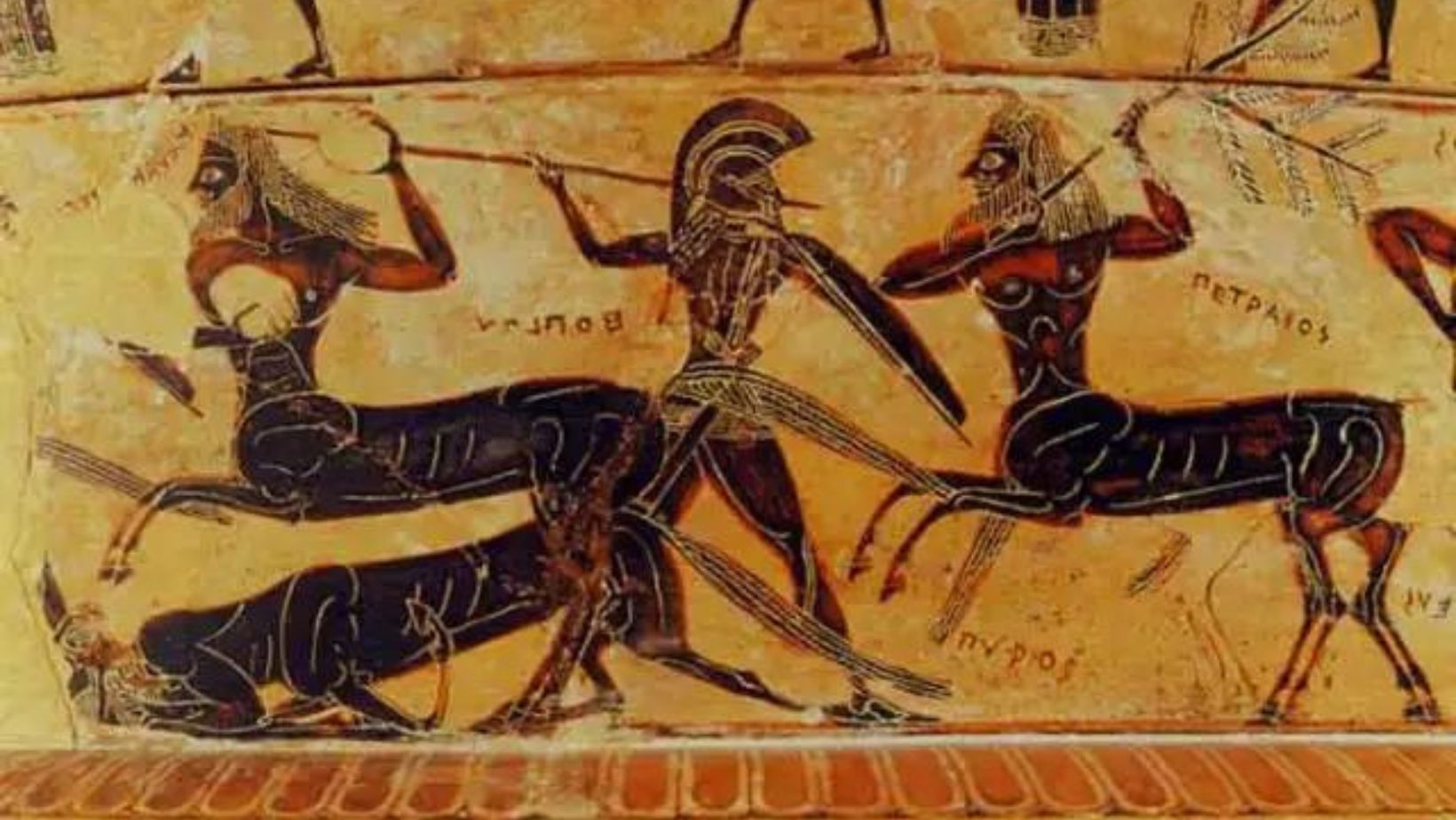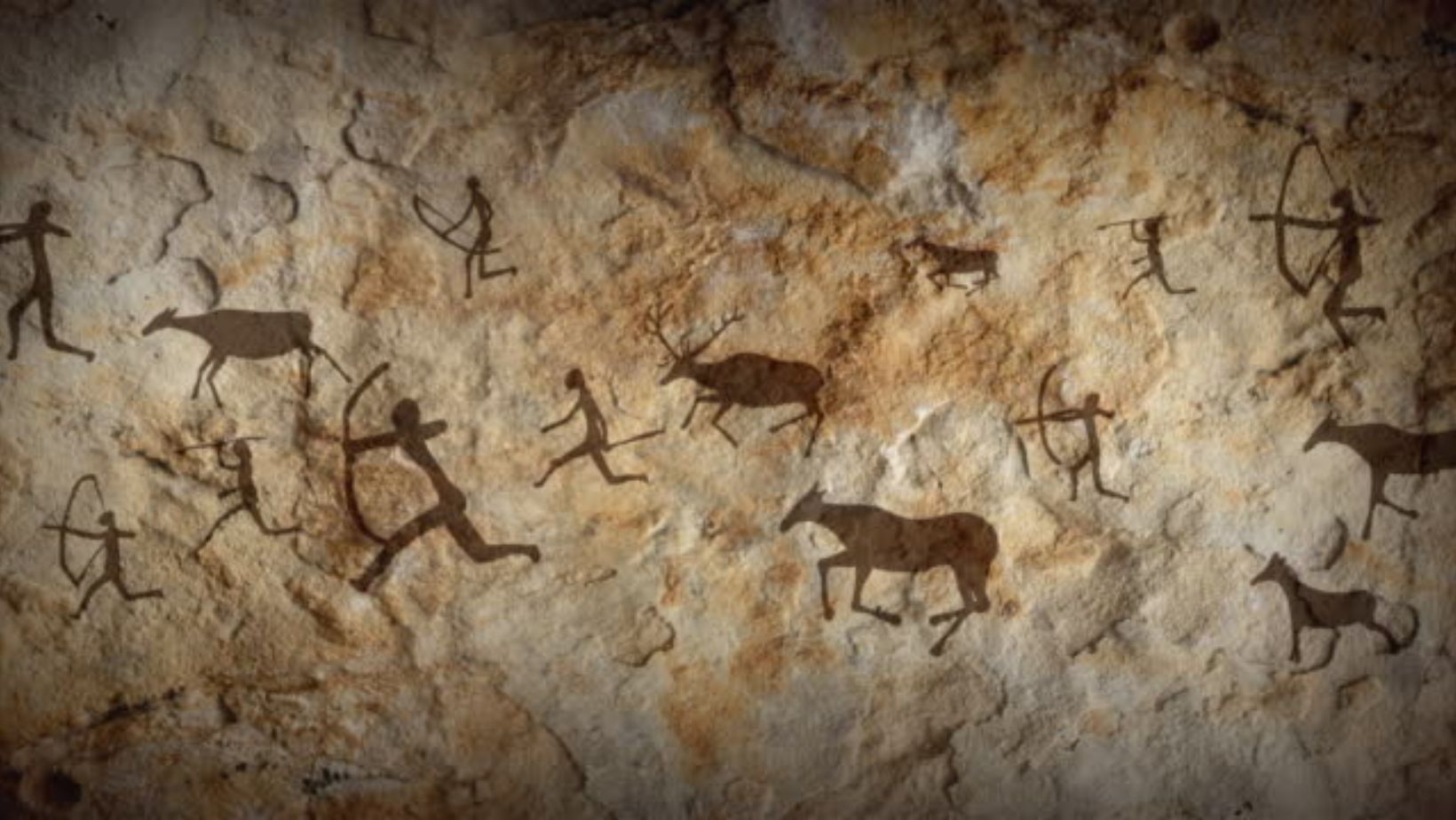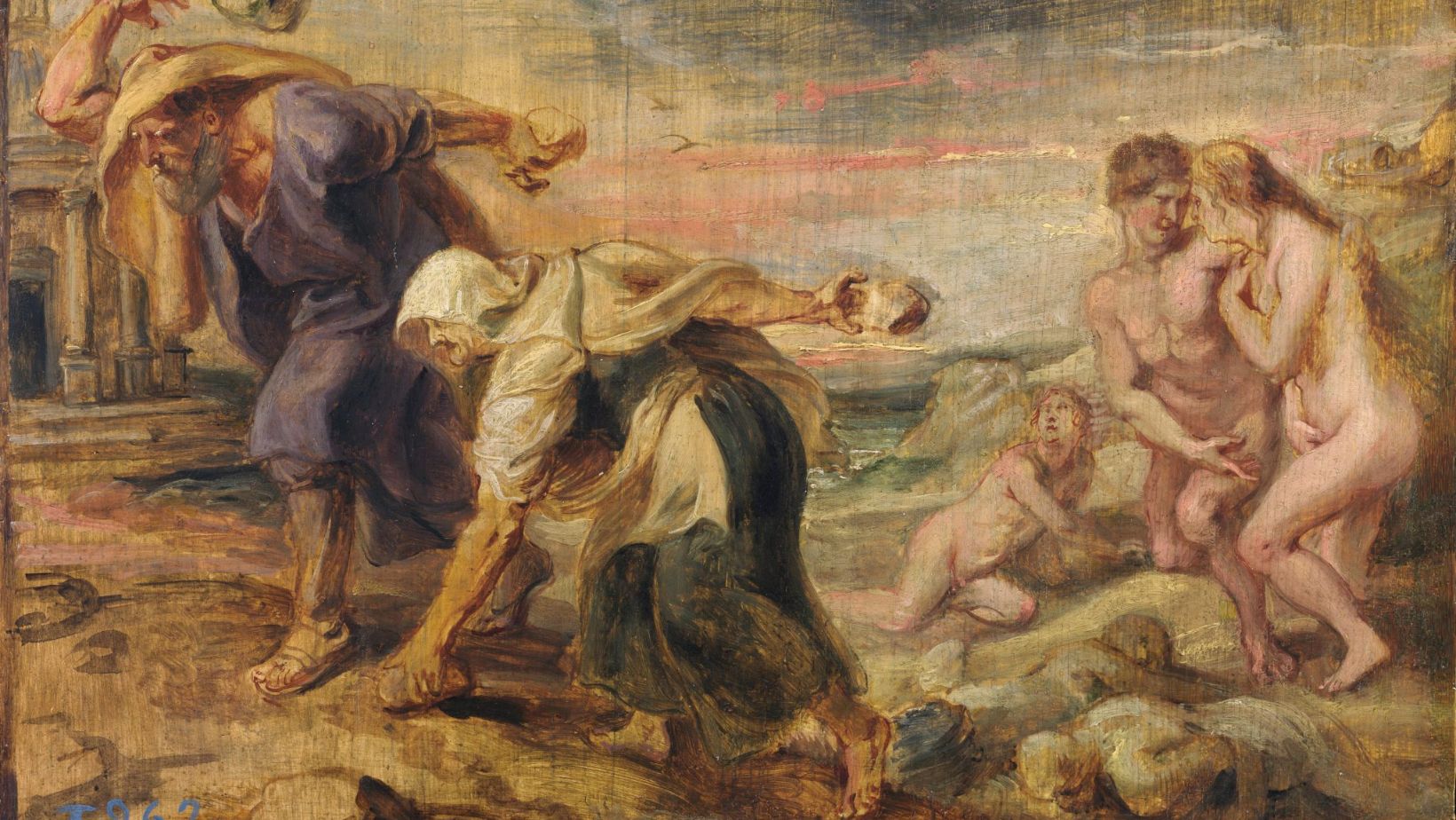Imagine the first human to drag a finger across a sandy rock surface, leaving behind a zig-zag pattern. That moment marked the birth of art and craft—a journey intertwined with human evolution. So why are there myths about the origin of art and craft? These stories bridge us to our ancestors, providing insight into their worldviews as they grappled with life’s mysteries.
Why are there myths about the origin of art and craft? The reasons we create haven’t changed much; from expressing beliefs to documenting experiences or adoring our surroundings—art is communication at its core. Dive in, and you’ll discover how these ancient narratives have influenced everything from cave art in walls adorned with forms from the Animal Kingdom to modern multimedia performance pieces.
Table Of Contents:
- The Role of Myth in the Evolution of Art and Craft
- Symbolism in Prehistoric Art Forms
- Cultural Significance Embodied in Craftsmanship
- Unveiling the Myths Behind Visual Arts Practices
- Tracing Oral Traditions in Artistic Narratives
- FAQs in Relation to Why Are There Myths About the Origin of Art and Craft
- Conclusion: Why are there Myths About the Origin of Art and Craft
The Role of Myth in the Evolution of Art and Craft
Have you ever wondered why ancient humans felt compelled to smear red ochre on cave walls or carve zig-zag patterns and rock engravings? Buckle up because we’re exploring how myths have shaped art and craft since someone decided a mammoth looked better with an outline.
Myths as Catalysts for Artistic Development
The creation myth is like the OG storyboard that gave our ancestors artistic severe direction. Picture this: you’ve got these stories about world-making bouncing around, and suddenly, there’s a surge in crafting objects that embody those tales. It’s not just pots and pans; it’s vessels carrying bits of the universe. From painting animal heads signifying spirit world connections on a cave wall, human beings were onto something big.
Say hello to likeness recognition—when early artists thought, “Hey, this bison I sketched looks like one.” That was huge because now they could tell their sagas through images. For example, using cliff faces as their own personal Instagram feed without the need for filters or hashtags.
Pablo Picasso once said it took him four years to paint like Raphael but a lifetime to paint like a child. He knew too well how intertwined myths are with our instinctual drive to create. Ancient folks weren’t trying for photo-realism; they were all about capturing essence—a bit more ‘spirit-of-the-mammoth’ than ‘mammoth-in-a-field.’
The Intersection of Mythology and Human Cognition in Art
Cut from stone tools used by H. erectus long ago came an unexpected gift—artistry beyond mere survival needs, evidence that thinking outside the box (or cave) isn’t new. The human mind has always sought ways to explain life’s big mysteries: enter stage left—mythology.
This symbolling activity wasn’t random doodles; it was complex communication channeling deeper understanding through shared symbols everyone recognized—a sort of ancient emoji set if you will—and every stroke told part of humanity’s collective story.
“Art evokes the mystery without which the world would not exist.” – René Magritte
Magic happened when oral traditions met handprints on rock shelters. The first multimedia performance pieces sans keyboard player but full-on jazz/rock skills displayed on nature’s ground floor space.
And in these galleries, we connect with history, gazing upon the same scenes that ancient eyes once did. But as we look at these age-old depictions of horses, more than just art stares back; centuries of civilization, culture, and companionship return our gaze.
Key Takeaway: Why are there Myths About the Origin of Art and Craft
Why are there Myths About the Origin of Art and Craft? Myths sparked the creative fire in our ancestors. Thus leading them to transform everyday objects into story-rich symbols and craft art that connects us across time.
They weren’t just making stuff but channeling the universe through their creations.
Symbolism in Prehistoric Art Forms
Why does a handprint on a cave wall from thousands of years ago still grab our attention? These ancient artists were onto something big: the power of symbols. And let me tell you, those prehistoric Picassos knew how to work with what they had.
Deciphering Cave Paintings Through Mythological Lenses
Cave paintings are like the cryptic tweets of the Stone Age—short, sweet, and full of hidden meanings. Take Lascaux, for example; it’s not just early home décor.
Those drawings might tell epic tales about human experiences. Or, they give us glimpses into spiritual realms that guided early human life. Now imagine if we could decode every zig-zag pattern or animal head sketched on rock surfaces—it’d be like reading messages straight out of Mother Nature’s Twitter feed.
Diving deeper into this art scene, researchers suggest that using red ochre and manganese dioxide wasn’t just an aesthetic choice and part of their symbolling activity—a fancy term for saying ‘these colors mean something special.’ So when you see a horse portrait drawn with red ochre, think about what horses symbolized back then: freedom or strength? That’s some pretty heavy stuff right there.
The plot thickens as we consider oral traditions that have passed down stories longer than your grandma’s “back in my day” lectures at Thanksgiving dinner. By tapping into oral traditions, scientists get clues that help make sense of these artistic riddles left by our ancestors who didn’t bother going with written instructions (thanks, guys).
We can’t talk about prehistoric symbolism without touching base with shamanistic theories, too—yeah, I’m looking at you, Clottes & Lewis-Williams. Some believe shamans entered trance states and painted their visions on cave walls to share insights from the spirit world—a pretty Yoda-meets-Banksy thing happening way before Instagram influencers made vision boards relaxed.
Mind’s Eye View: The Role Of Human Cognition In Art Interpretation
You’ve got to give props to ancient humans—they may not have invented Wi-Fi, but they sure did hack the code to likeness recognition in art forms well before anyone even thought up 3D objects or VR goggles. This was all thanks to nifty neural circuits dedicated to decoding visual info—from recognizing mammoth silhouettes etched as rock arts sheltered from time itself.
This talent didn’t just pop up overnight, though; experts like McBrearty & Brooks say it took millennia for Homo sapiens’ grey matter gym sessions aka evolving brains—to reach levels where crafting detailed rock paintings became a feat of their advanced cognitive abilities. They had to develop the right tools and skills, learning from each generation to improve upon the last. It’s an incredible journey highlighting our human species’ unique ability to innovate and express ourselves through art.
Key Takeaway: Why are there Myths About the Origin of Art and Craft
Why are there Myths About the Origin of Art and Craft? Has it ever been struck by a handprint on an ancient cave wall? It’s not just old-school graffiti; it’s the OG of symbolism. Those prehistoric Picassos were all about using colors and shapes to tell stories or share spiritual insights—think horse drawings as Stone Age emojis for strength.
Digging into these artistic mysteries, we can thank our ancestors’ evolving brains—and their knack for visual storytelling—for some profound art history that goes way beyond pretty pictures.
Cultural Significance Embodied in Craftsmanship
Every stitch, every carved line, and each dyed fabric tells a story. Across cultures, craftsmanship is more than just the creation of an object—it’s a vessel for storytelling deeply rooted in the values and beliefs unique to its people. European art may showcase meticulous oil painting techniques reflecting societal ideals from different eras, while American art often narrates tales of diversity and innovation through mediums like quilting or metalwork.
Craft as a Vessel for Storytelling Across Cultures
The hands that shape clay into pottery are passing down more than just a skill; they’re breathing life into the very soil we stand on. Pottery can hold within it not only food or water but also centuries-old traditions. Consider how specific groups have encoded their history onto surfaces: African tribes imprinting patterns symbolizing unity or Native Americans crafting baskets woven with stories of survival and resilience.
This embodiment isn’t confined by geography either—no matter where you go, from rock shelter artworks to modern 3D objects showcased in places like the Vorarlberg Museum, human beings consistently pour essence into form. The original meaning behind these items might fade over time as contexts change, but one thing remains constant: our inherent need to express identity through making.
For instance, human body decoration using natural pigments has been practiced since prehistoric times—a symbolling activity connecting us back to early human occupation sites where signs of such personal expression were first discovered.
The language might evolve from cave walls adorned with zig-zag patterns representing spiritual journeys to contemporary multimedia performance pieces channeling collective experiences. Still, our desire for likeness recognition persists across millennia.
Why are there Myths About the Origin of Art and Craft?
Delving deeper still reveals an animal head fashioned out of stone wasn’t merely about emulating physical attributes; it was capturing something far more intangible—the spirit world envisaged by ancient minds, which continues to influence today’s artists seeking similar connections beyond what meets the eye.
Yet even without overt mythic imagery present within them—crafts act as guardians preserving oral traditions once recounted around firesides now silently embedded within threads and brushstrokes waiting patiently beneath museum glass panels ready at any moment—to whisper ancestral secrets again should someone pause long enough…to listen genuinely. Learn more about oral traditions.
Key Takeaway: Why are there Myths About the Origin of Art and Craft
Why are there Myths About the Origin of Art and Craft? Crafts aren’t just objects; they’re stories in physical form. They carry the heartbeat of culture, from European paintings to Native American baskets, each holding a piece of history and identity.
Art evolves, but our need for expression stands firm—be it ancient stone carvings or modern art performances, we’ve always sought to capture more than meets the eye.
Unveiling the Myths Behind Visual Arts Practices
When we peel back the layers of time, we find that visual arts have always danced with mythology. It’s not just about creating something pretty to look at; it’s a way for cultures to stitch their stories into history.
Myths as Catalysts for Artistic Development
The relationship between myths and art is age-old, much like an enduring friendship where each inspires growth in the other. Consider creation myths—they’re not merely tales our ancestors whipped up around a fire. They were—and still are—the sparks igniting artistic fires across civilizations. With every brushstroke on a cave wall or chisel mark on stone, artists from ancient times gave life to these stories.
We see this even today in contemporary art—where modern mavens’ craft works are steeped in narratives as old as human thought. This symbiotic connection points us towards understanding how pivotal myth has been throughout our journey from early homo sapiens doodling zig-zag patterns onto rock surfaces through Picasso reinventing form and space.
The Intersection of Mythology and Human Cognition in Art
Diving deeper into this entwined history requires us to recognize another critical player: human cognition. Our ability to perceive patterns and imbue them with meaning allowed us not only likeness recognition but also sparked our earliest attempts at representation—a horse portrayed not just as a flesh-and-bone creature but also as embodying spirit world connections within its lines drawn upon cave walls or carved onto rock shelters.
This leap was crucial—it marked a point where humankind started seeing beyond mere survival, venturing into realms of symbolizing activity that mirrored inner thoughts and outer realities alike.
Fast forward several millennia past H.erectus’ initial artistic endeavors until now; what remains consistent is this innate desire within human beings—to capture both tangible reality and intangible beliefs via whatever creative process they can harness. Mythology, ever-present behind-the-scenes guiding hands moving over canvas or shaping clay?
Key Takeaway: Why are there Myths About the Origin of Art and Craft
Why are there Myths About the Origin of Art and Craft? Art and myths go way back, pushing the other to grow. They’re like best buddies, with creation stories lighting up artists’ imaginations forever. And hey, our brains love finding patterns in things—that’s what got us drawing horses that were more than just animals but symbols.
Tracing Oral Traditions in Artistic Narratives
When we talk about the whispers of the past, oral traditions are a testament to human creativity and resilience. These stories, passed down through generations before written language took hold, are embedded in every stroke on a cave wall and etched symbols on rock surfaces.
Deciphering Cave Paintings Through Mythological Lenses
The earliest artists left their mark with more than pigments; they imbued their work with tales that spoke volumes. In those zig-zag patterns and animal forms lies an intricate web of myths connecting us back to when our ancestors roamed alongside mammoths.
Some researchers like Clottes & Lewis-Williams suggest these images were part of trance states—glimpses into the spirit world that early humans sought to understand.
Cave paintings often show creatures like bison with an uncanny sense for body decoration or animals sporting an unlikely human head—an interplay between man and beast hinting at ancient shape-shifting legends.
By studying such artwork from places rich in prehistoric lore, such as Vorarlberg Museum’s collections or Lascaux’s depths, one can almost hear echoes of hero twins from Maya mythology or catch glimpses of Greek tragedies unfolding across rocky canvases.
Craft as a Vessel for Storytelling Across Cultures
Dive deeper into history, and you’ll find craftsmanship carrying forward this legacy. Whether it’s pottery shards whispering forgotten epics or woven textiles encoding ancestral victories, each art object serves not just a practical use but also functions as a mnemonic device keeping oral histories alive.
This symbolling activity is evident where communities still practice body painting—a form of living artistry directly tied to mythic narratives around identity and kinship within specific groups while being used during certain ceremonies embodying original meaning long rooted in tradition.
The allure behind artistic expression extends beyond mere aesthetic pleasure—it has always been profoundly intertwined with storytelling. Soressi & D’Errico might argue that even H.erectus engaged in likeness recognition by creating 3D objects resembling themselves or their environment; what if these, too, carried narratives now lost?
The Intersection of Mythology and Human Cognition in Art
We mustn’t overlook how deeply connected myth-making is to human cognition itself—the mind’s eye conceives worlds untold, which then spill forth onto rock shelters worldwide via ochre-stained hands inspired by oral traditions recounted around firelight under open skies filled with stars once thought unreachable until we reached their centuries later…
Oral traditions, far from primitive ramblings, are complex systems encoded within humanity’s collective psyche. Passing down through generations, these tales weave a vibrant fabric of history and culture. These stories aren’t just entertainment; they carry lessons, morals, and the wisdom of ages. We’ve understood that these narratives are crucial to grasping human experiences across different societies.
Key Takeaway: Why are there Myths About the Origin of Art and Craft
Why are there Myths About the Origin of Art and Craft? Dive into the past and see how art is more than pretty pictures. It’s full of ancient stories that have been with us since before we could write, keeping history alive through every pot shard and cave drawing.
FAQs in Relation to Why Are There Myths About the Origin of Art and Craft
Why is mythology important in art?
Mythology breathes life into art, giving it depth and context that resonates with our search for meaning.
What is the origin of arts and crafts?
The birthplace of arts and crafts lies deep in prehistoric times, evolving as humans expressed their worldviews.
Why do cultures tell myths about their origin?
Cultures craft origin myths to bond communities with shared heritage tales, grounding them in a collective identity.
What are two reasons that people created myths?
Folks spun myths to explain the unknown and teach moral lessons wrapped up in captivating stories.
Conclusion: Why are there Myths About the Origin of Art and Craft
Remember why are there myths about the origin of art and craft are pivotal. They’re not just tales; they’re our ancestors’ attempts to make sense of their world. Remember how these stories fueled human creativity, leading us from simple zig-zag patterns on rocks to complex visual narratives.
Keep in mind the symbols etched onto ancient cave walls. They weren’t mere decorations but a language that spoke of more profound spiritual beliefs and cultural values—a testament to early human cognition.
Hold onto the idea that craftsmanship is more than skill—it carries centuries of cultural heritage and mythic themes binding communities across time and space.
Consider this: every brushstroke or carved line is part of humanity’s long game in storytelling. And remember, whether it’s through prehistoric rock paintings or contemporary multimedia pieces, we’ve always played with reality—blurring lines between what we see and what could be—in our endless quest for meaning.

